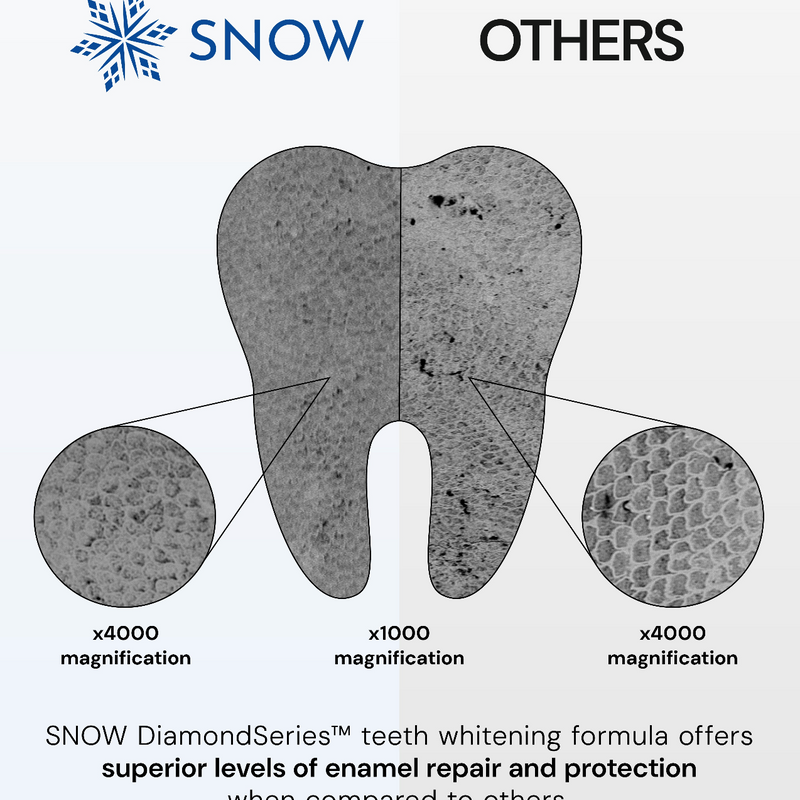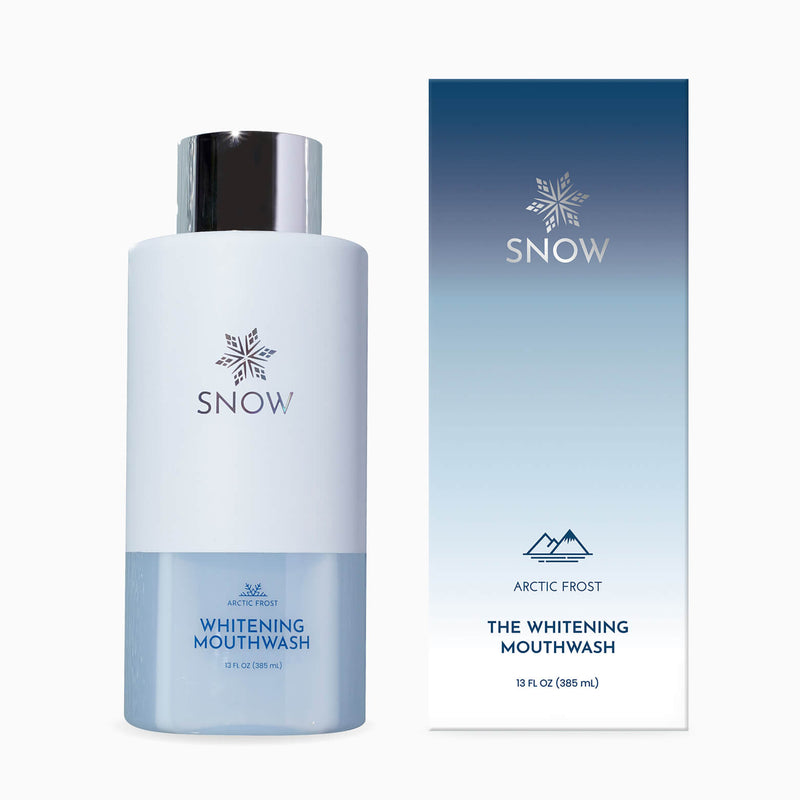How deep should you floss? To properly clean between your teeth and gums, you need to reach just below the gum line.
In this article, we'll explore common flossing mistakes, like flossing above the gum line or stopping when you see blood. We'll also discuss timing, the proper way to floss, and how to avoid irritating your gums by choosing the right type of floss or using a water flosser.
At SNOW, we cover your flossing-related queries, including how often should you floss and how long should flossing take.
Here are the top mistakes to avoid.
Common Flossing Mistakes
Learning how to floss properly matters, but many people make simple mistakes, including not flossing deeply enough. In the next sections, we'll go into detail about the most common flossing errors and how to correct them.
Flossing Above The Gum Line
Flossing only above the gum line is a common error that many people make. Our findings show that by not flossing below the gum line, you miss out on cleaning areas where bacteria and plaque tend to accumulate.
These hidden spots can eventually lead to gum inflammation or even periodontal disease.
For a deeper, more effective clean, consider using the SNOW Water Flosser. With adjustable pressure settings and portability, it's perfect for gentle yet thorough flossing, whether you're at home or on the go.
Stopping When You See Blood
Stopping as soon as you see blood is a mistake. While it might seem alarming, a bit of bleeding can indicate that your gums are inflamed and need more consistent care. In fact, it's often a sign that plaque or bacteria have been sitting in those areas for too long.

Rather than stopping, it's important to continue flossing regularly to promote healing and reduce future bleeding. Over time, the bleeding will likely subside as your gums become healthier.
For a solution that not only helps with cleaning but also provides whitening benefits, try SNOW's Activated Charcoal Whitening Floss.
Flossing At The Wrong Time Of Day
Based on our observations, timing matters when it comes to flossing. Many people aren't aware that flossing before brushing is often more effective.
Flossing first helps to dislodge food particles and plaque from between your teeth, which brushing then sweeps away. If you floss after brushing, you might miss the opportunity to fully clean those areas.
Flossing at night is also highly recommended, as it removes the buildup of food and bacteria from the day. This ensures that plaque doesn't sit on your teeth overnight, where it can do the most damage.
SNOW Arctic Frost teeth whitening mouthwash offers a perfect finish to your routine. It whitens teeth, refreshes your breath, and soothes gums with its alcohol-free, peppermint-infused formula.
Flossing After Brushing
Flossing should be done before brushing. If you brush first and floss afterwards, you're leaving some of those loosened particles in your mouth, where they can lead to plaque buildup.
For even better results, use SNOW's Nano-Hydroxyapatite teeth whitening toothpaste after flossing. It strengthens enamel and lifts stains, giving you cleaner teeth and fresher breath.
Partially Flossing The Tooth
Our research indicates that only flossing one side of the tooth is another frequent occurrence. Many people run the floss up and down between teeth, only cleaning one side.
However, each tooth has two sides, and both need equal attention. Failing to floss both sides leaves room for plaque to remain, which could eventually lead to cavities or gum issues.
To properly floss, curve the floss around each tooth, sliding it up and down both sides. For added convenience, SNOW Charcoal Whitening Floss Picks combine the power of activated charcoal with an easy-to-use design, making sure you can clean every surface thoroughly.
Irritating The Gums
Flossing too aggressively can do more harm than good. Many people think that vigorous flossing is the best way to remove debris, but it can actually irritate the gums and lead to bleeding or discomfort.
Being too rough with your gums can cause them to recede or become inflamed over time. A slow, steady motion will not only protect your gums but also provide a more thorough clean.
Using The Wrong Type Of Floss
Choosing the right floss for your teeth is often overlooked but can make a big difference. People with tightly spaced teeth might struggle with regular floss, leading to frustration and ineffective cleaning.
In such cases, waxed floss or a thinner, glide-type floss can slip between teeth more easily and provide a better experience. However, for those who find traditional floss difficult to use or uncomfortable, a water flosser is a fantastic alternative.
Conclusion
How deep should you floss? The answer lies in gently flossing just below the gum line so that you remove debris and plaque without causing damage.
We've discussed some of the most common flossing mistakes, including stopping when you see blood, flossing at the wrong time, and using the wrong type of floss. By correcting these errors and flossing thoroughly, you'll protect your gums and teeth from potential harm.
If you're looking for tools to enhance your oral care routine, explore SNOW's products and take the next step toward a healthier smile today.
If you want to learn more, why not check out these articles below:
- How Much Floss to Use
- How to Floss with Braces
- How to Floss with Permanent Retainer
- How to Floss Under Permanent Retainer Without Threader
- How to Use a Water Flosser
- How to Clean Water Flosser
- How Often Should You Water Floss
- Can a Water Flosser Remove Tartar?
- Can You Put Mouthwash in a Water Flosser?
- Can I Use Water Flosser Everyday
- How to Floss Back Teeth
- How to Floss a Bridge
- How to Floss for Kids
- How to Floss 1 Year Old Teeth
- Do Water Flossers Work?

























